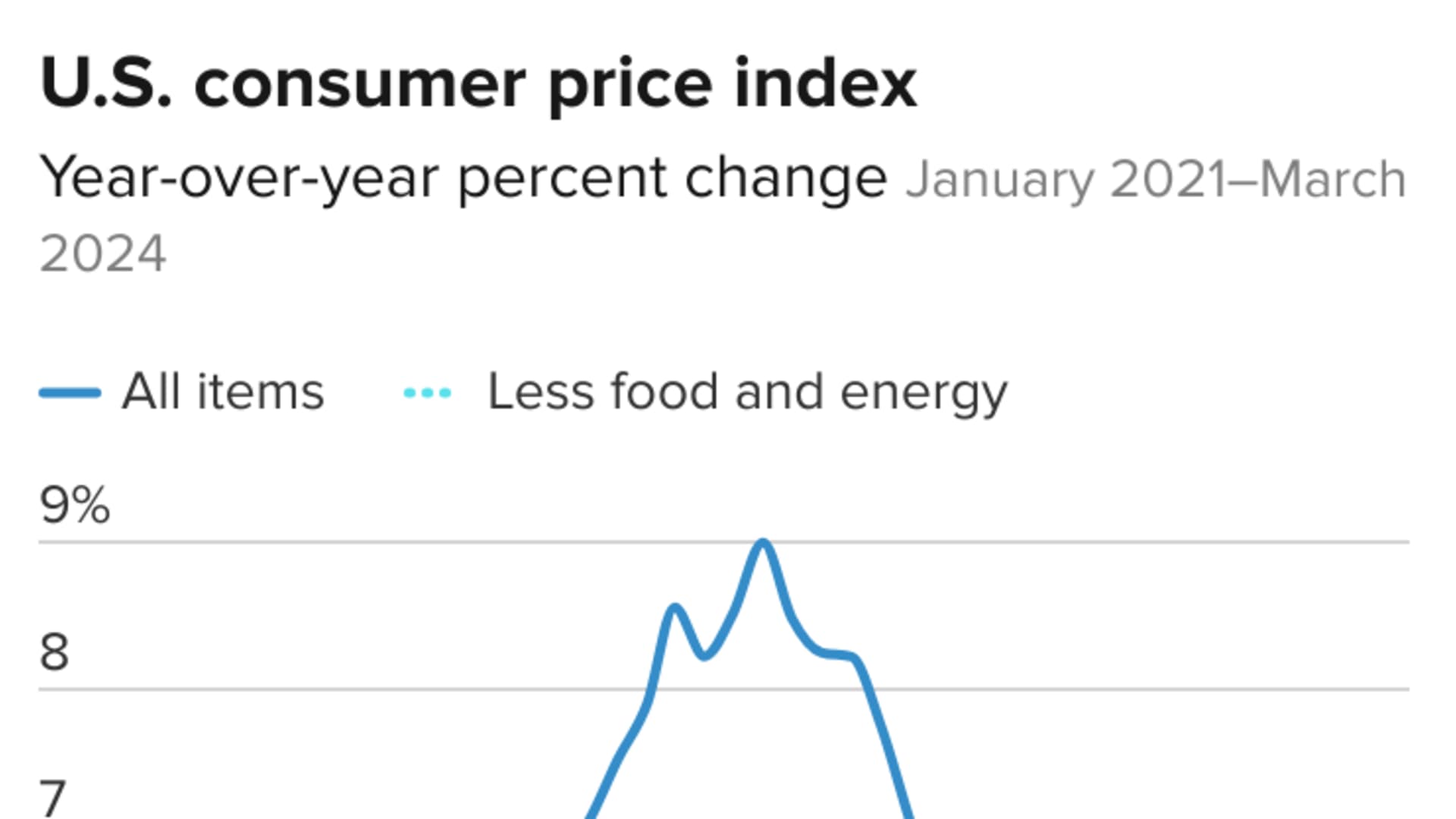
- The number of households that live above the poverty line but are barely scrapping by is ticking higher.
- Currently, nearly 40 million families are defined as ALICE, which stands for Asset Limited, Income Constrained, Employed.
- High inflation and higher interest rates have taken a hefty toll, and there is little relief in sight.
Over time, higher costs and sluggish wage growth have left more Americans financially vulnerable, with many known as "ALICEs."
Nearly 40 million families, or 29% of the population, fall in the category of ALICE — Asset Limited, Income Constrained, Employed — according to United Way's United for ALICE program, which first coined the term to refer to households earning above the poverty line but less than what's needed to get by.
Get New England news, weather forecasts and entertainment stories to your inbox. Sign up for NECN newsletters.
That figure doesn't include the 37.9 million Americans who live in poverty, comprising 11.5% of the total population, according to data from the U.S. Census Bureau.
More from Personal Finance:
Cash savers still have an opportunity to beat inflation
Here's what's wrong with TikTok's viral savings challenges
The strong U.S. job market is in a 'sweet spot,' economists say
"ALICE is the nation's child-care workers, home health aides and cashiers heralded during the pandemic — those working low-wage jobs, with little or no savings and one emergency from poverty," said Stephanie Hoopes, national director at United for ALICE.
Money Report
Inflation weighs on low-income households
The term ALICE "essentially describes what people in the lower middle class have seen for decades, they can just cover current needs but not easily generate a surplus to cover the cost of a home or investments like stocks or bonds," said Columbia Business School economics professor Brett House.
"It's an acute situation for more people now than a few years ago," House added.
Stubborn inflation has driven many households near the breaking point, but the pain of high prices has not been shared equally.
By most measures, low-income households have been hardest hit, experts say. The lowest-paid workers spend more of their income on necessities such as food, rent and gas, which also experienced higher-than-average inflation spikes.
"The ALICE households, in particular, have borne the brunt of inflation," said Greg McBride, chief financial analyst at Bankrate. "Even though we've seen wage growth on the low- to moderate-income scale, that's also where inflation has hit the hardest."
Inflation has been a persistent problem since the Covid-19 pandemic when price increases soared to their highest levels since the early 1980s. The Federal Reserve responded with a series of interest rate hikes that took its benchmark rate to its highest level in more than 22 years.
The spike in interest rates caused most consumer borrowing costs to skyrocket, putting many households under pressure.

Inflation continues to prove stickier than expected, dashing hopes that the Fed will be able to cut interest rates anytime soon. Increasing inflation has also been bad news for workers, as real average hourly earnings rose just 0.6% over the past year, according to the Labor Department's Bureau of Labor Statistics.
Recent statements by Fed Chair Jerome Powell and other policymakers also cemented the notion that rate cuts aren't coming just yet.
That leaves ALICEs in a bind, Hoopes said. "Keeping rates high is hurting the labor market and ALICEs' ability to have higher wages."

In the meantime, lower-income households have fewer ways to reduce or change their spending habits and less money in their savings or investment accounts to fall back on.
To bridge the gap, some families are increasingly relying on credit cards to cover some bills. In the past year, credit card debt spiked to an all-time high, while the personal savings rate fell.
Credit card delinquency rates climbed to 3.1% at the end of 2023, the highest level in 12 years, according to Fed data.






